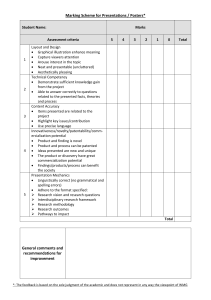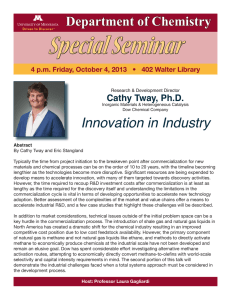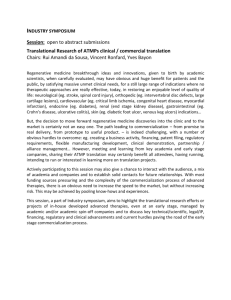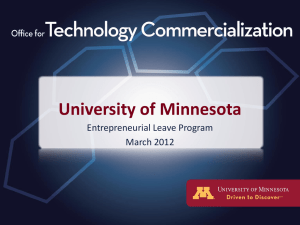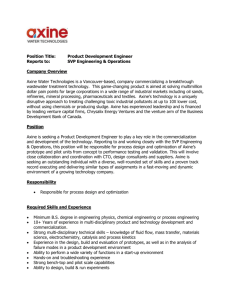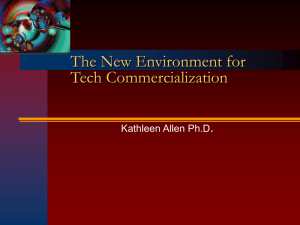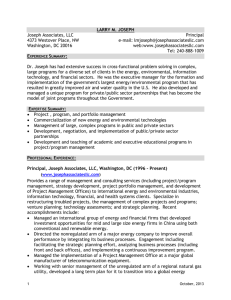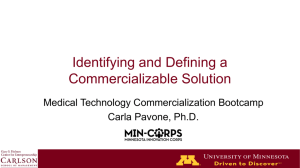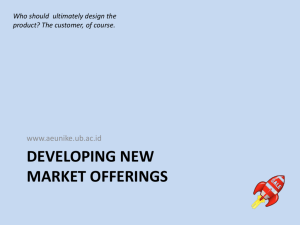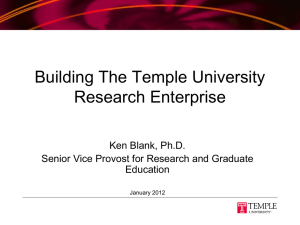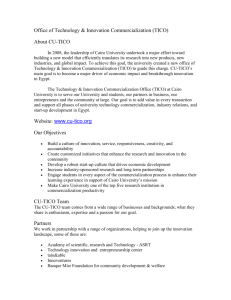Dr TG Barnard ,University of Johannesburg
advertisement
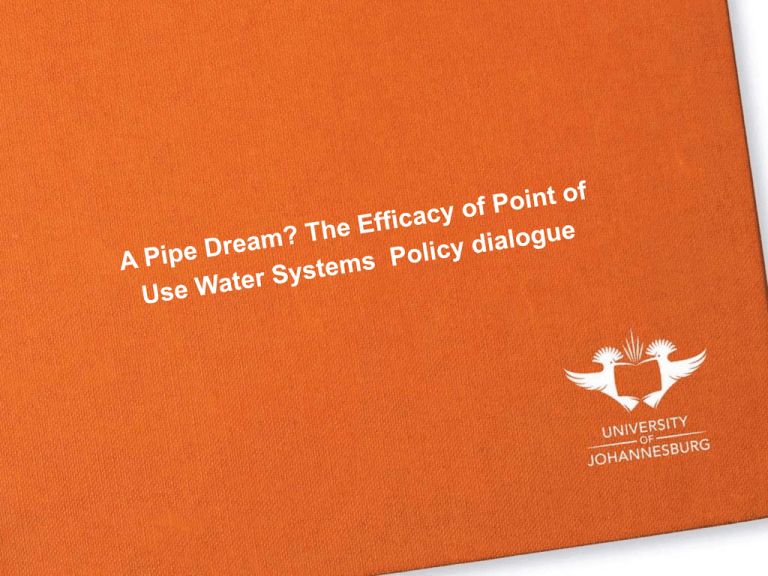
HISTORY OF WHRC Established in 2004 – Prof Paul Jagals Since 2008 – Dr TG Barnard Originally known as the “Water and Health Research Unit” Now known as the “Water and Health Research Centre” Change in direction needed to answer demands from SA water sector RESEARCH FOCUS: OLD VERSUS NEW Original research focus Inter-disciplinary research approach to establish the HESET risk assessment toolkit for evaluating water related studies HESET = Health, economical, social, environmental, technology Adapted research focus Inter-disciplinary research approach using current expertise available in Faculty of Health Science Initial main focus on developing advanced technology for water, stool and food samples for the presence of bacterial pathogens RESEARCH AIMS Research aims: Detection of bacterial pathogens (qualitative and quantitative) Public perceptions regarding water, water treatment or water technology Commercialization of projects Commercialization of projects topic of presentation: Personal experiences with the design and commercialization process My views and experiences – not necessarily the same for all OUR APPROACH TO COMMERCIALIZATION Call for multi-disciplinary research to answer needs of country Including sociologists or anthropologists Next step include Industrial designer University of Venda and University of Johannesburg project Funded by Water Research Commission Potters-for-Peace Ceramic Water Filter OUR APPROACH TO COMMERCIALIZATION OUR APPROACH TO COMMERCIALIZATION What did we learn? We need to link science with industrial design Appointed Industrial designer in the Centre Working with designer not always easy! Different backgrounds makes communication difficult THE DESIGN PROCESS PRODUCTS SO FAR HOW DO WE PROJECT OUR DESIGN? Patenting or licencing? Do not patent whole design Patent small parts of the design Our approach is determined by each product Do we want to produce this? Do we licence and “rent” our idea to industry? HOW DO WE APPROACH OUR PRODUCTS? What we want and we can do not the same? Be realistic in what can be done Need for prototyping What type of method used to produce the product Rotor moulding, injection moulding, rapid growing etc. Looking at cost vs. quality vs. output What do the community want? Is it practical to produce and use? Would they really want to use it? Would you use your product? HOW DO WE FUND OUR PRODUCTS? Look at hidden design costs? Different moulds can influence your cost Produce in SA or China? Decide what you want to do then look for funds Look at projected actual costs? Can people afford to buy it? Can we make it more affordable? Jay Bhagwan design approach OUR PROBLEMS? We have the ideas and designs but we are not business men When applying for funds: Business plan/model Market survey etc. This makes commercialization difficult! FINAL THOUGHTS? Get a good team together Design what the affluent would want to buy but the poor need to use Have fun with your project! ACKNOWLEDGEMENTS Collaborators University of Venda – Prof Natasha Potgieter ERWAT and Rand Water Funders University of Johannesburg Water Research Commission National Research Foundation University of Johannesburg Prof Andre Swart Industrial designers: Robin Robertson and Martin Bolton WHRC lab personal and students We drink tap water…. Do you?
